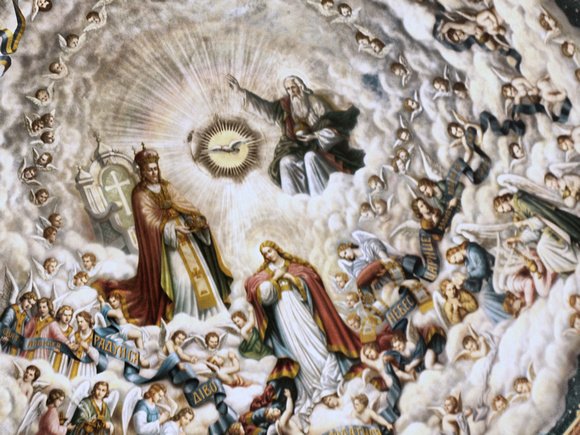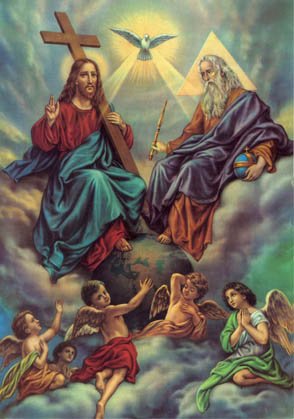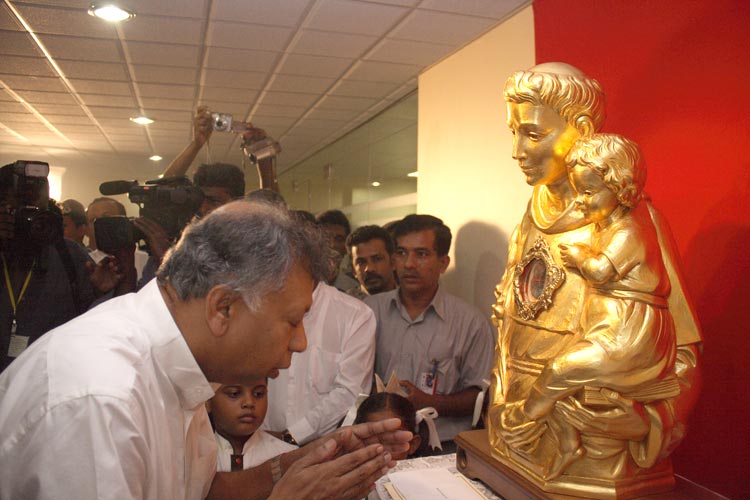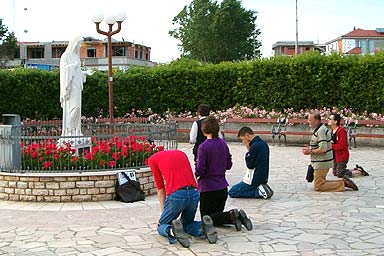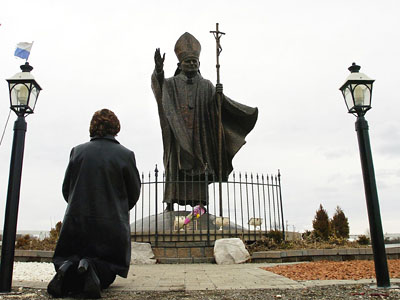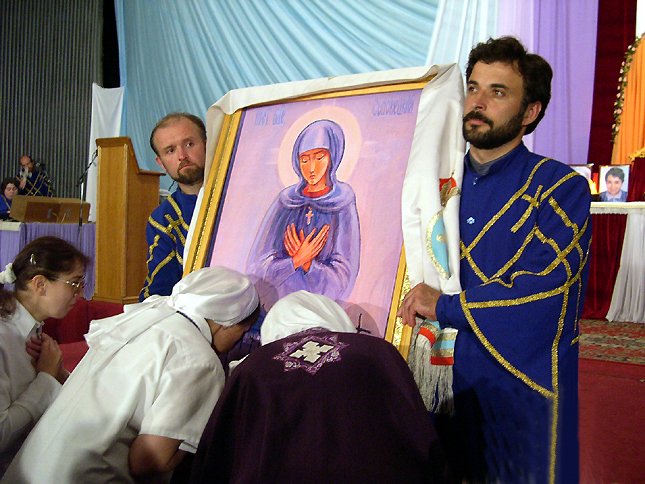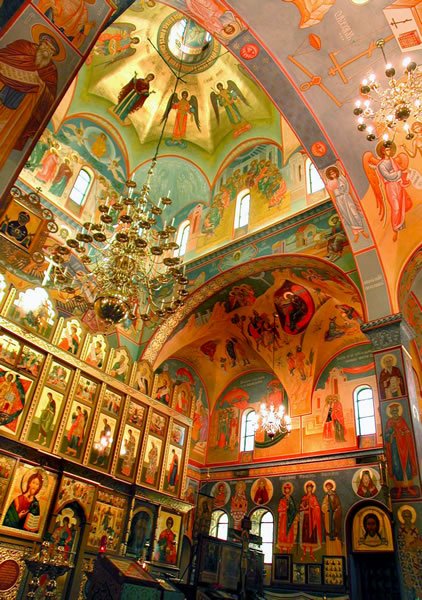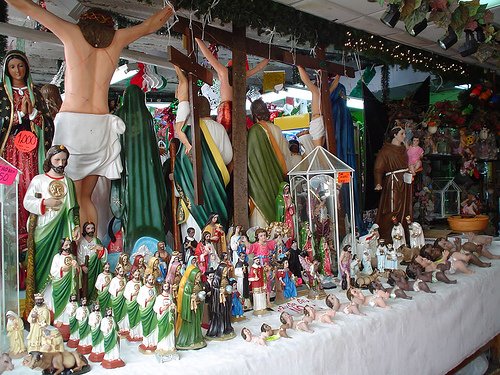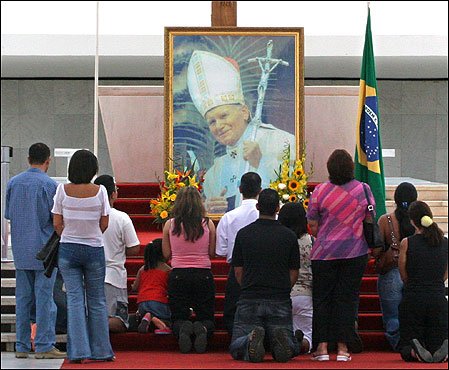Iconodule
Esteemed Member
- Messages
- 161
- Reaction score
- 11
- Gender
- Male
- Religion
- Christianity
I want to clarify the meaning and significance of icons in Christianity, with the hope that this will promote mutual understanding. I am not intending to begin a polemical thread, just to clarify what Orthodox Christians actually believe and practice. If, after reading my post, some still feel that icons are idolatrous or contrary to scripture they are of course free to make those arguments here but I will not defend against them, as I do not think polemics, especially online ones, are typically useful. On the other hand, sincere questions for the purpose of clarification I will gladly answer.
I am not a theologian so I will not pretend that my presentation without flaws or the most authoritative.
In the 8th century the iconoclast movement was launched in the Byzantine empire, which argued that icons were idolatrous. Among other reasons, they argued that icons were anathema because they violated the second commandment:
The iconoclasts interpreted this commandment as an utter prohibition against any depictions of created things; many Protestants today make the same argument. Other important points they made included the impossibility of depicting the invisible God and the supposed limitation of icons to only depicting Christ's human nature or else confusing his human and divine natures.
The Orthodox defenders of icons, such as St. John of Damascus and St. Theodore the Studite, made the following points:
1. The second commandment could not possibly be a blanket prohibition of images, since God commanded the Holy Prophet Moses to create the golden cherubim on the Ark as well as images of cherubim embroidered in the veil protecting the Holy of Holies. Moses was likewise commanded to make a brazen image of a serpent to cure the Israelites of snake venom. The Prophet and King Solomon also included images of angels, as well as bulls and other creatures, when he built the Temple in Jerusalem, and this was blessed by God.
2. The second commandment is really concerned with offering the worship due to God to things which are not God ("for I the Lord thy God am a jealous God"). The icon given to icons is relative and directed ultimately toward the one true God. We honor the depiction only for the sake of Him whom it depicts; wood and paint are not objects of worship. We honor the saints and their relics likewise as reflections of God's glory, recognizing that no one but God is holy in himself; all holiness comes from God and reflects God's glory. Saints and relics are miracle-working only virtue of God's power working through them.
3. With the incarnation of Christ, the invisible God became truly human and therefore visible and depictable. Since Jesus Christ is one person, perfect God and perfect man, images of Christ are truly images of God incarnate. To deny icons is to deny the oneness of Christ and the reality of His incarnation.
4. God is utterly transcendent from His creation but also fully immanent in it; the created is saturated with God's energies and, especially since the incarnation, where God took on a human body of matter, matter can be blessed and permeated with holiness. We can observe God's glory in the creation in general, as well as in particular holy places and relics, and most of all in the mysteries or sacraments of the Church. Again, this does not permit worship of any material thing but honoring the holiness of God which works through matter.
I am not a theologian so I will not pretend that my presentation without flaws or the most authoritative.
In the 8th century the iconoclast movement was launched in the Byzantine empire, which argued that icons were idolatrous. Among other reasons, they argued that icons were anathema because they violated the second commandment:
You shall not make for yourself an idol or a likeness of anything in heaven above, or in the earth beneath, or in the waters under the earth. You shall not bow to them or serve them, for I, the Lord your God, am a jealous God, recompensing the sins of the fathers on the children of the third and fourth generation of those who hate Me.
The iconoclasts interpreted this commandment as an utter prohibition against any depictions of created things; many Protestants today make the same argument. Other important points they made included the impossibility of depicting the invisible God and the supposed limitation of icons to only depicting Christ's human nature or else confusing his human and divine natures.
The Orthodox defenders of icons, such as St. John of Damascus and St. Theodore the Studite, made the following points:
1. The second commandment could not possibly be a blanket prohibition of images, since God commanded the Holy Prophet Moses to create the golden cherubim on the Ark as well as images of cherubim embroidered in the veil protecting the Holy of Holies. Moses was likewise commanded to make a brazen image of a serpent to cure the Israelites of snake venom. The Prophet and King Solomon also included images of angels, as well as bulls and other creatures, when he built the Temple in Jerusalem, and this was blessed by God.
2. The second commandment is really concerned with offering the worship due to God to things which are not God ("for I the Lord thy God am a jealous God"). The icon given to icons is relative and directed ultimately toward the one true God. We honor the depiction only for the sake of Him whom it depicts; wood and paint are not objects of worship. We honor the saints and their relics likewise as reflections of God's glory, recognizing that no one but God is holy in himself; all holiness comes from God and reflects God's glory. Saints and relics are miracle-working only virtue of God's power working through them.
3. With the incarnation of Christ, the invisible God became truly human and therefore visible and depictable. Since Jesus Christ is one person, perfect God and perfect man, images of Christ are truly images of God incarnate. To deny icons is to deny the oneness of Christ and the reality of His incarnation.
4. God is utterly transcendent from His creation but also fully immanent in it; the created is saturated with God's energies and, especially since the incarnation, where God took on a human body of matter, matter can be blessed and permeated with holiness. We can observe God's glory in the creation in general, as well as in particular holy places and relics, and most of all in the mysteries or sacraments of the Church. Again, this does not permit worship of any material thing but honoring the holiness of God which works through matter.
Last edited:

